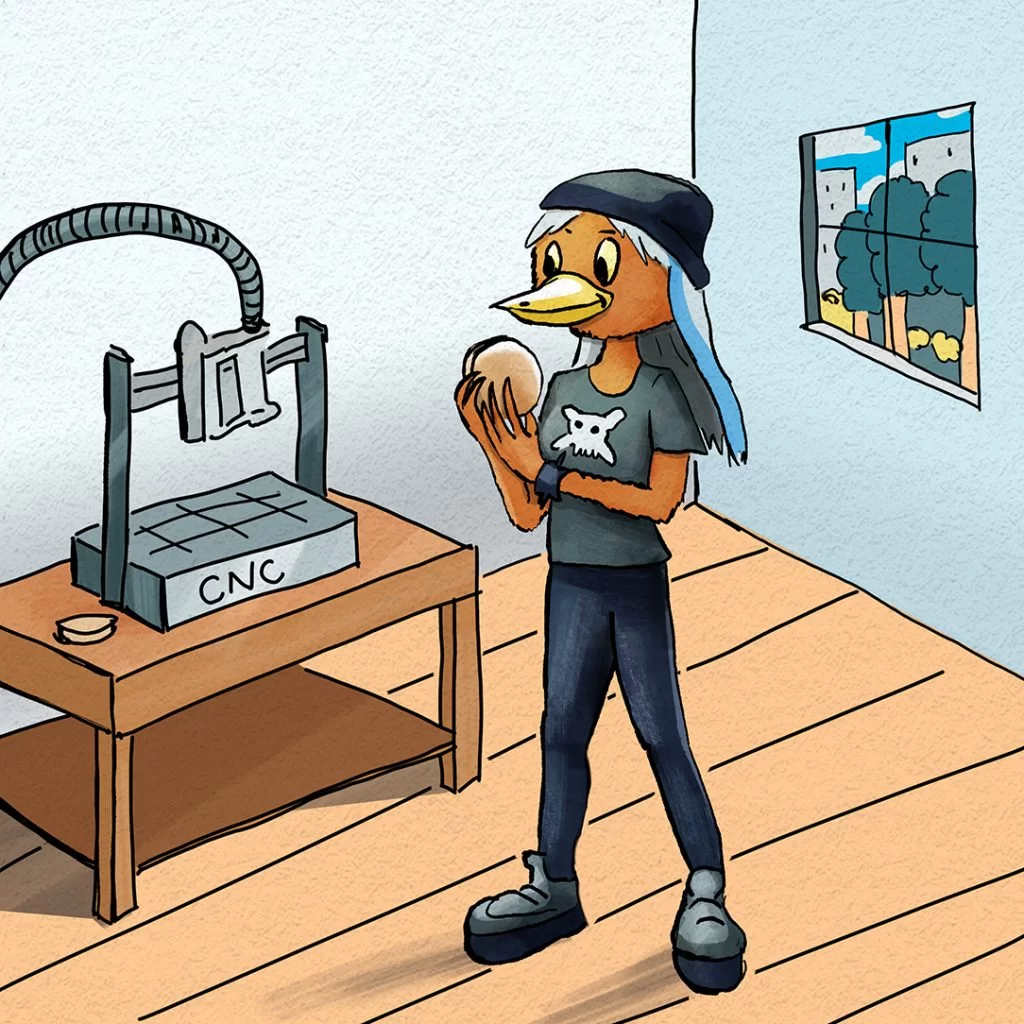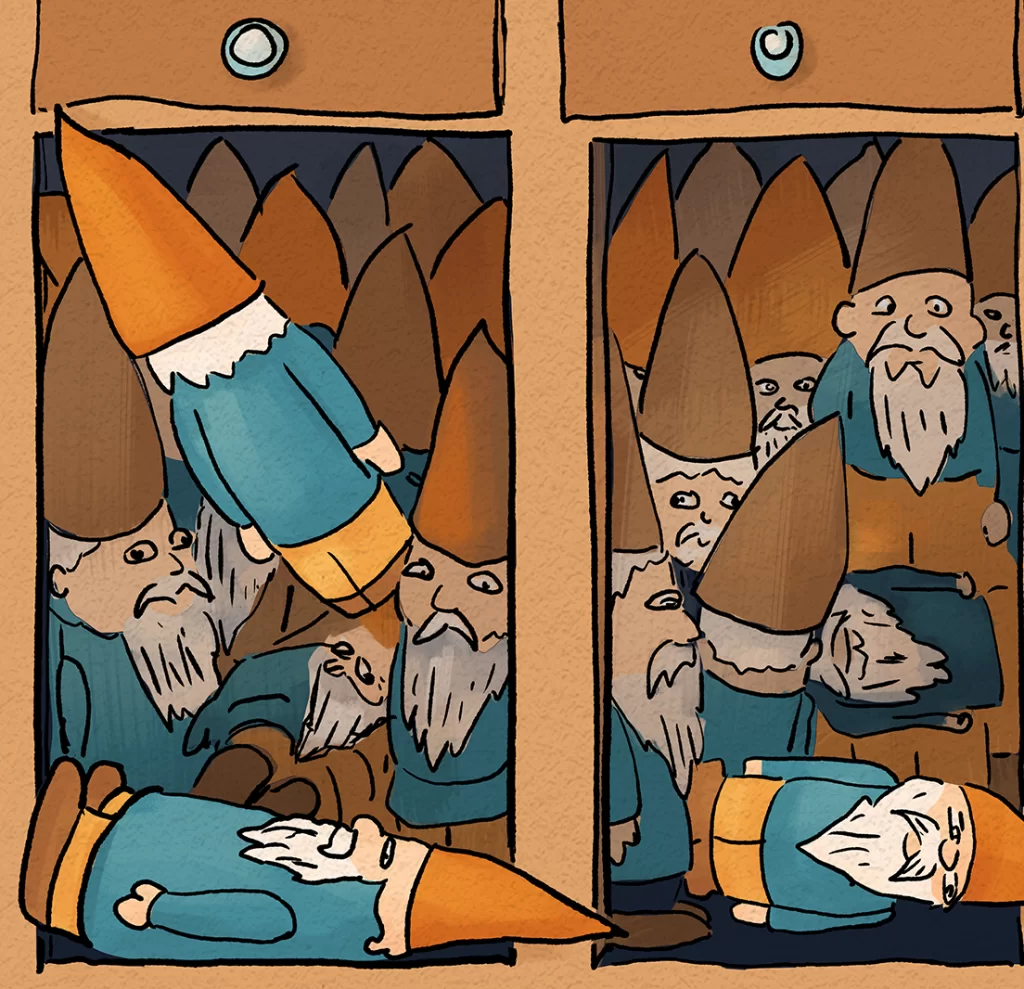
You run a small manufacturing business. Or maybe you think of yourself as more of a Maker business owner or a Craftsperson. Anyway, you make things and sell them. But how do you know how many to make????
When you first started out, the answer was probably, “Ummm… some?” and that’s totally fine! Pretty much every business starts with just making a good product and getting people to buy it. But the sooner you can professionalize your approach to inventory management, the more successful your business will be.
Why Inventory Management is important
In the next few articles we’ll dive deeper into specific strategies for inventory management, but first, let’s back up and talk about WHY it’s so important!
Rhonda didn’t think about it much at first…
If you’re a regular PCat reader, you know that Rhonda is a retired nurse who now runs a small business selling wooden items that she makes in her garage workshop.

And last year she stumbled upon a surprise hit product, the Gnome Beer Mug!

The beer mugs were super-popular. Which was great! But they were so popular during the holiday gift season that Rhonda was running into a problem:

Or, in more general terms,
Insufficient Inventory
Rhonda had people who wanted to buy her product, but nothing to sell them. And, while in some industries things are built to order and some lead time is expected, that’s not usually the case for something like a novelty beer mug that’s being purchased as a gift. Tragically, most of Rhonda’s would-be customers simply bought a different gag gift for their friends and loved ones. By not having enough inventory, Rhonda was leaving money on the table.
And that’s not all!
There was a large delay for customers who ordered online. This made Rhonda’s business look unprofessional* and amateurish! In other words, she was losing customer goodwill.
Finally, because Rhonda was spending most of her time in the shop trying to catch up with demand, she didn’t have time to focus on other things that would have helped her business at that time of year – like giving interviews in local news media or stepping up her advertising.
So this year, Rhonda decided she wasn’t going to have the same problem again! She stocked up on materials, spent all summer in the shop, and ended up with…

Yes, there are also problems with excess inventory :/
Why you should avoid Excess Inventory
- Storage! You might actually be paying for warehousing, or as in Rhonda’s case, it might just be cluttering up your workspace.
- Cash flow: Rhonda had to buy all of her supplies in advance but wouldn’t get any revenue from the beer mugs until she sold them. This meant she had little left to spend on other things, like upgrading her equipment. If you’re using debt to finance your purchase of supplies (for example, putting the purchase on a credit card and not paying it off right away) you’re actually paying to use that money!
- Loss: Rhonda’s cabinets were so cluttered that some of her beer mugs got damaged and had to be thrown away before she could even sell them! Depending on what you’re selling and how your business is set up, you might also have to consider spoilage (especially with food products) or theft.
So, having seen the problems with both too little inventory and too much, Rhonda decided to do what she always did: call her friend Process Cat for help!
Process Cat assured Rhonda that there are indeed some strategies she can use to predict the RIGHT amount of inventory for her business. But that’s a story for next time…
Weekly Challenge:
Let this story spark you to think through your own experiences with inventory. Do you ever have too much or too little? And come back next time to discover how to optimize your own inventory.

*Some businesses use authentic scarcity as a marketing strategy. That may be fine if it’s intentional. Here on Process Cat, we stick to operations advice, so we’re assuming you don’t want to be on backorder 🙂
Ps. Come back next time to learn about the different types and functions of inventory!




